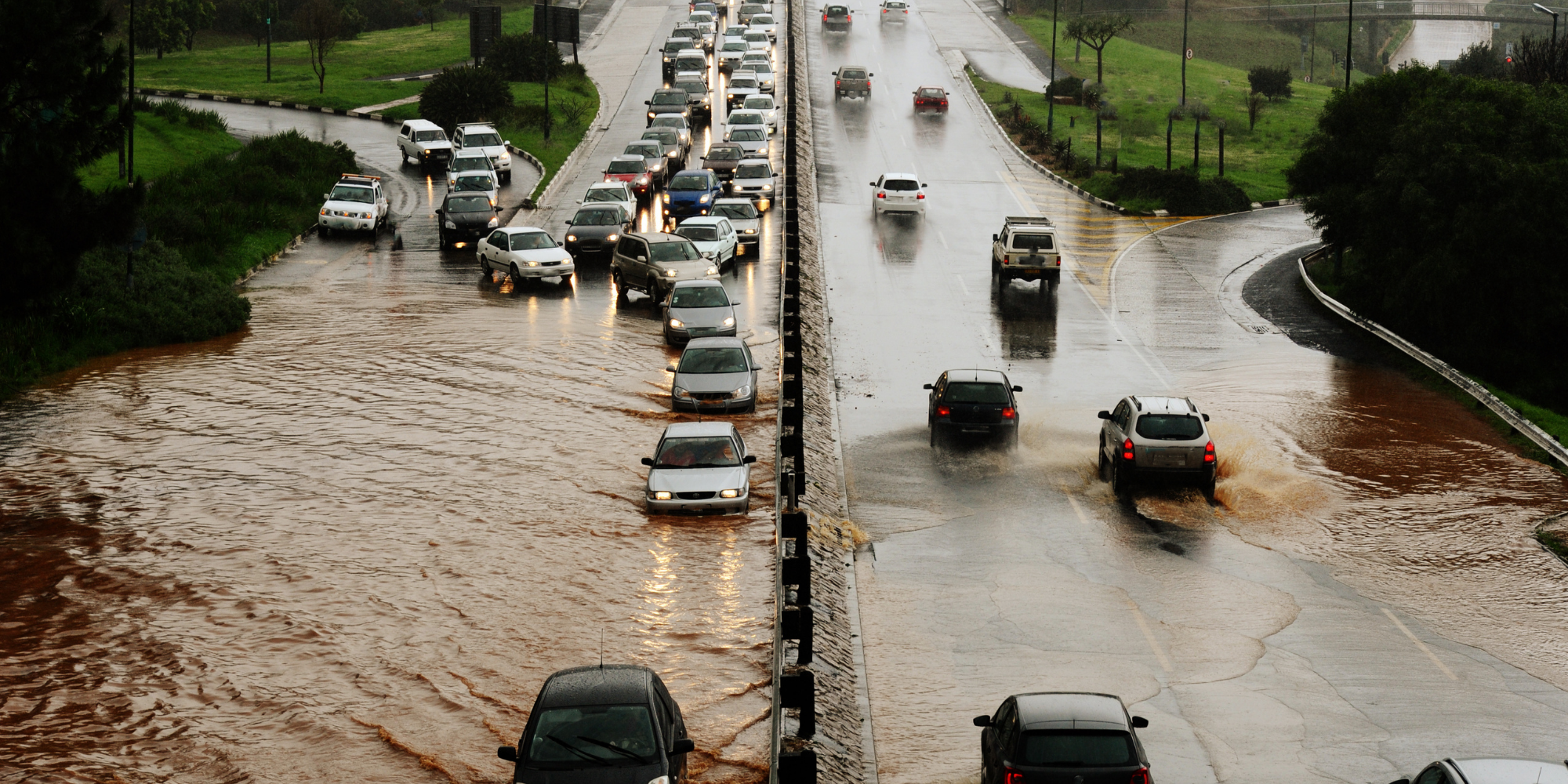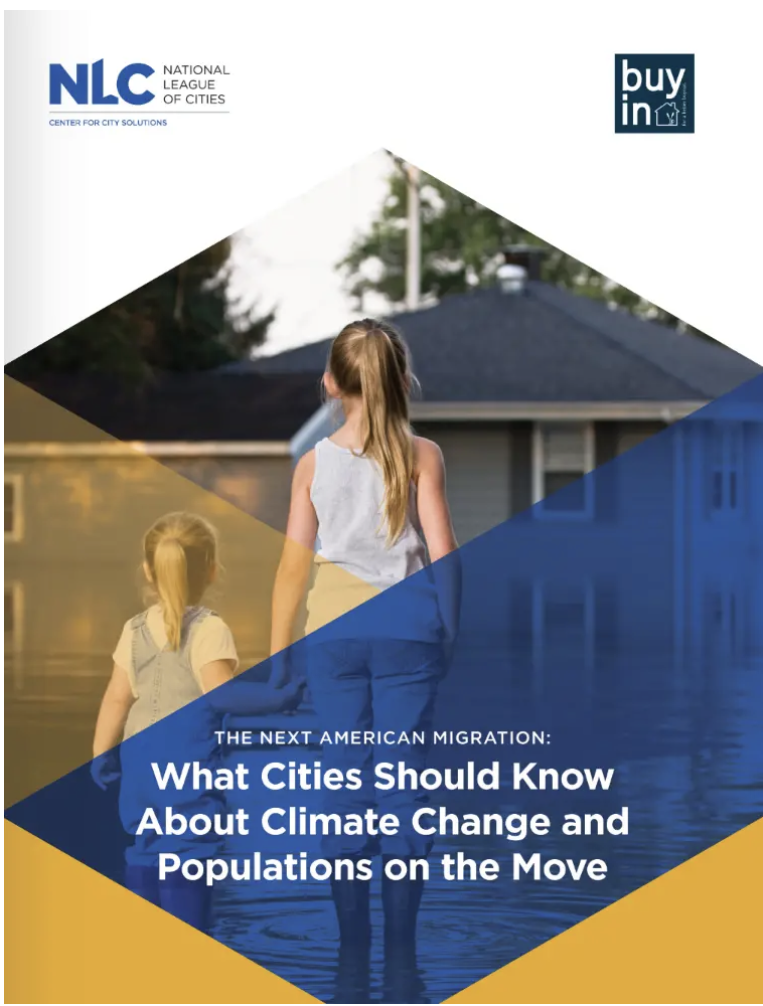One of the many things the last few years has taught us is that climate change is no longer just a problem for future generations. It is here now and is affecting the lives of millions of Americans in cities, towns and villages across the country each year.
With each hurricane, wildfire or flooding event that we see in the headlines, more residents in communities across the country are being forced out of their homes. According to the Internal Displacement Monitoring Center, 1.7 million Americans were displaced by weather-related disasters in 2020 alone. Although coverage of these extreme weather events is growing in the news and in academic journals, there is no single resource for city leaders to better understand how the problem of climate-related displacement and migration trends may impact their community now and in the years to come.
Today, the National League of Cities and Buy-In Community Planning, Inc. are launching a new report, The Next American Migration: What Cities Should Know About Climate Change and Populations on the Move, to provide our local leaders with the information they need to better understand this complicated topic and to proactively plan for the future. The report is the outcome of conversations with a handful of city and local staff across the country who are thinking about the intersection of climate migration with their local planning goals.
What did our research uncover?
While many residents are being forced out of their homes due to disasters, people across America are relocating in advance of catastrophes if they can afford to do so. Some cities, like Chico, CA, that are already struggling to handle stressors like a lack of affordable housing, have been hit hard receiving evacuees when disasters strike in nearby communities. Other places, like Cincinnati, OH; Flagstaff, AZ and the state of Vermont, cite anecdotal evidence that people are moving there to escape the threat of growing climate hazards. These new residents provide both welcome development opportunities as well as challenges in terms of providing services.
Every community in the U.S. is and will continue to be affected by climate change. However, every community has a different history, cultural context, set of resources and capacity to prepare for climate impacts and other stressors. This report provides a simple framework for local leaders to consider what type of city they are living, working and playing in, and how they can start planning for climate-related risks and demographic changes in their own communities. As part of the research’s proposed framework, cities may identify with one or more of the following categories:
- Vulnerable cities: These are typically small and mid- sized cities facing high climate risks (e.g., wildfires, drought, flooding, sea level rise, etc.), but that may still be rapidly growing in light of other factors such as lower taxes, better job markets or a more desirable climate (such as warmer weather). Portions of these communities will likely need to retreat from high-risk areas such as coasts, forests or floodplains in the coming years or invest in extremely expensive protective infrastructure, which can pose a significant cost burden on local budgets.
- Recipient cities: These are communities that are already experiencing social stressors (e.g., housing affordability crisis, severe gridlock and lack of public transportation, racial or economic inequity, etc.) or even their own share of climate impacts. However, they may also be receiving new residents from neighboring communities severely affected by climate change impacts or extreme weather. These cities may not be large enough to handle an influx of new residents and subsequently struggle to provide services for all residents.
- Climate destinations: These are cities with relatively lower climate risks (or vulnerability to extreme events like hurricanes and wildfires) that are actively looking to grow in population. Some destinations may have been designed to handle more residents than live there today and, as a result, may have more affordable housing stock or opportunities to redevelop more sustainably within an existing urban footprint. However, because they may also face their own climate stressors like changing precipitation patterns or need significant financial resources to upgrade their infrastructure, these cities must be actively engaged in building more resilient and equitable communities.
This framework is designed to encapsulate a spectrum of possibilities cities could experience in the coming decades. As a result, some cities may find that they embody characteristics of one or more categories. The framework isn’t a prescription, but rather, a guideline to help residents, city staff, elected officials and other stakeholders recognize patterns in their own cities that would make it easier to start a conversation around this complex and potentially controversial subject.
With limited capacity and mounting challenges in the wake of the COVID-19 pandemic, city officials must demonstrate bold leadership and creativity, particularly when it comes to mitigating the impacts of climate change and supporting their communities. With once-in-a-generation federal funding streams passing through states and often directly to localities, now is the time for local leaders to change the way their cities operate in order to effectively prepare for what’s next.
Here’s what city leaders can learn from this report:
- Do not ignore your city’s climate risks or social stressors. Consider working within your regional area to address issues that lay beyond city lines. Even if your city is not facing immediate climate risks, it may be affected by evacuations from a nearby city. Local leaders should consider how regional evacuation patterns could tighten housing supply and stress local services.
- Long-range planning matters. It may be another decade or two before some cities experience climate impacts, but keep in mind that the lifespan of large infrastructure projects are often 100 years or more. Using the best available data and engaging in local or regional scenario planning can help you identify whether or not your city should plan for growth, shrinkage, or even both, in response to climate change.
- Invest in climate preparedness and affordable housing, regardless of what category of climate risk and migration trajectory your city falls into. Preparing for the effects of climate change must be a “whole of government” approach. Cities can’t do this work on their own and will need non-partisan, sensible leadership that acknowledges current and future climate risks, in order to envision opportunities to create safer, more equitable communities. Use the recommendations in this report to inform how your city can approach and engage with your state officials and federal agencies.
Across the country, we need to be realistic about what the consequences of the climate crisis look like in our communities. By doing so, we can ensure that our cities are future-ready, equitable and resilient places to live – now, and for many decades to come.
Read NLC’s report on climate migration in America’s cities, towns and villages.

About the Author:
Kelly Lelani Main is the Co-Founder and Executive Director of Buy-In Community Planning, Inc.










